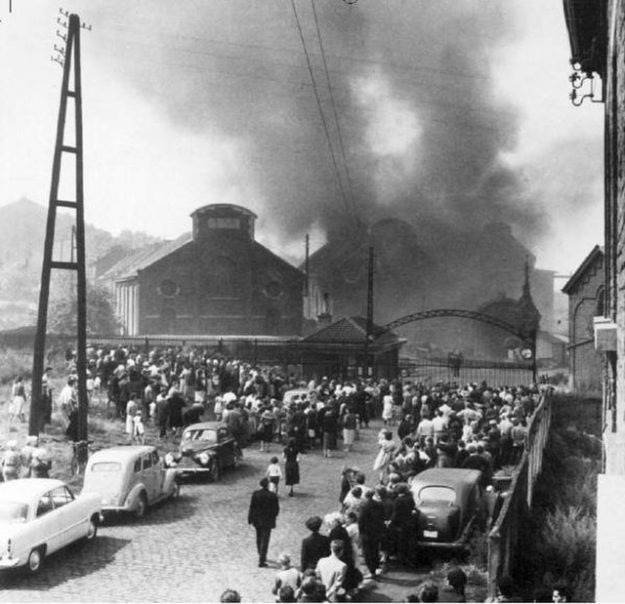
Full article (open access): The seeds of a European risk society: Marcinelle and the European Coal and Steel Community
Siegfrieds own, terrific summary which you also can find on his Twitter account:
 In 1956, a terrible accident with a mine chariot happened in the Bois du Cazier coal mine in Marcinelle, Belgium. 262 miners died, of which 136 Italians. The disaster was in many ways transnational. Casualties came from all over Europe (mostly Italy), but the risks that led up to the disaster were similar in other countries too.
In 1956, a terrible accident with a mine chariot happened in the Bois du Cazier coal mine in Marcinelle, Belgium. 262 miners died, of which 136 Italians. The disaster was in many ways transnational. Casualties came from all over Europe (mostly Italy), but the risks that led up to the disaster were similar in other countries too.
My argument: the European Community of Steel and Coal (ECSC) seized this opportunity to increase its power. In doing so, it laid the foundation of later risk management policies, or what we can call ‘the European risk society’. Marcinelle shaped how the EU deals with risk! EU historians have often argued that the impact of Marcinelle on the ECSC was limited and that ECSC failed in mine safety policy. While it was indeed not their proudest moment, we do not have to be too skeptical either. Yes, a lot of social measures regulating wages, working times, and immigration did not materialise. But a lot of other (more technical) measures did. Understanding the impact of Marcinelle thus means looking at risk management at large. The ECSC went all-in on social policy (still a difficult area for the EU today) and therefore created a (fake) contrast with other technical safety measures. Ironically, it is in the latter category it would be the most successful. Social and technical are hardly separable.
In the article, I follow the developments of a conference on mining safety and the foundation of the Mines Safety Commission. Both were important for internationalising many safety discussions and agenda-setting. They also brought risk assessment into the European institutions. Lastly, we have to analyse Marcinelle long-term. Whether the mines actually became much safer is doubtable. Many mines also closed soon after. But European risk management continued, especially in the Single Market. I even found references to Marcinelle in the Euratom archives.

